Table of contents
Porcini mushrooms are very popular both fresh and dried and can be used in many different ways in the kitchen. Depending on the drying process, the dried porcini mushroom ( Boletus spp.) or chanterelle mushroom can be described as raw food ( raw) and is also available in organic quality.
Use in the kitchen
Dried porcini mushrooms develop a particularly intense flavour, which is why you usually only need small amounts. In this form they are used as an ingredient in many different dishes. Porcini mushrooms (dried) enhance soups (e.g. organic mushroom and vegetable broth with carrots and celery) and sauces, are excellent in vegan pasta dishes, stews and gratins and give millet risotto ( kale millet risotto with mushrooms and thyme), risotto and polenta that certain something.
The mushroom also tastes excellent in tortellini fillings (e.g. walnut tortellini with red wine mushroom reduction) and ravioli (e.g. rawioli corners with porcini mushroom filling). Dried porcini mushrooms can also be prepared well with other mushrooms (e.g. cultivated mushrooms, chanterelles, oyster mushrooms, king oyster mushrooms, shiitake mushrooms). Seasoning with a little salt andpepper is often enough. In addition, herbs (e.g. parsley, chives, thyme, marjoram, coriander) and a little garlic can round off the intense aroma of the porcini mushroom.
Before processing, dried porcini mushrooms should be soaked in lukewarm water for 15-30 minutes and allowed to swell. The remaining spring water with mushroom aroma can be used for cooking. However, it should be strained first.
Dried porcini mushrooms can be ground into powder in a mortar shortly before use. In powder form, very small amounts are sufficient and can be added directly to the dish. The powder is useful in vegan goulash, all kinds of sauces and potato soups - as a flavor carrier and binding agent. You can find recipes for porcini mushrooms all over the internet. You can read more about preparing porcini mushrooms under the ingredient porcini mushroom, raw (organic?).
Dried porcini mushrooms are not recommended as raw food as they could cause stomach problems.
Homemade preparation
Dried porcini mushrooms are easy to make yourself. To do this, clean fresh porcini mushrooms with a brush without water, cut them into slices about 5 mm thick and lay them out on a newspaper or a dry cloth in a warm place (out of direct sunlight) and leave to dry. The porcini mushrooms should be turned once a day. The mushrooms should be dry after about two to three days. To store the dried porcini mushrooms, fill them into a sealable jar.
Another method is to dry the porcini mushrooms in the oven. Place the cleaned porcini mushroom slices on a baking tray and leave them to dry for five to six hours with the oven door slightly open. Make sure that the temperature never exceeds 50 °C. If you want raw food quality, you should not exceed 42 °C and it is best to use a dehydrator.
Drying fresh porcini mushrooms increases the complexity of the volatile compounds, which significantly changes the aroma profile of the porcini mushrooms. This makes roasted aromas and a spice-like taste more prominent and reduces grassy and earthy notes. 10
Vegan recipe for polenta with dried porcini mushrooms
Ingredients (for 4 people): 300 g corn semolina, 1 handful of porcini mushrooms (dried, organic), 1 l vegetable stock, 1 bunch of fresh thyme, 1 tbsp rapeseed oil, a little salt andpepper.
Preparation: Bring the vegetable stock to the boil. Slowly stir in the corn semolina. Reduce the temperature to the lowest setting and cover the pot lightly with a lid. Steam for about 20 minutes, stirring occasionally. Meanwhile, let the dried porcini mushrooms swell in lukewarm water for about 15 minutes. Squeeze the porcini mushrooms well, fry them lightly in a heated pan with a little rapeseed oil and season with a little salt and pepper. Pick off the thyme leaves and add them to the polenta with the mushrooms. Decorate the vegan porcini polenta with a few sprigs of thyme and serve.
Vegan recipes with dried porcini mushrooms can be found under the note: " Recipes that have the most of this ingredient ".
| Not only vegans or vegetarians should read this: Vegans often eat unhealthily. Avoidable nutritional errors. |
Purchasing - Storage
Dried porcini mushrooms are usually available all year round in supermarkets (e.g. Coop, Migros, Denner, Volg, Spar, Aldi, Lidl, Rewe, Edeka, Hofer, Billa). In organic supermarkets (e.g. Alnatura, Denn's Biomarkt) and health food stores you can find dried porcini mushrooms in organic and raw quality (raw, organic). Dried porcini mushrooms can also be ordered from online shops. A large part of the goods come from China (for details see "General information").
The availability of dried porcini mushrooms varies depending on the size of the store, catchment area, etc. Our recorded food prices for the DA-CH countries can be found above under the ingredient image - and by clicking you can see their development at various suppliers.
Storage tips
It is best to store dried porcini mushrooms in a well-sealable, airtight container in a dry, dark and cool place. If stored correctly, dried porcini mushrooms can be kept for several years without any noticeable loss of quality. If the humidity is too high, the porcini mushrooms will start to mold, which is noticeable by a musty smell. The gray coating that occasionally forms on the dried porcini mushrooms is caused by crystallized minerals and is harmless. 9
Ingredients - Nutritional values - Calories
Dried porcini mushrooms contain many more calories than fresh porcini mushrooms. The energy content of porcini mushrooms (dried) is 269 kcal per 100 g. Carbohydrates are present at 59 g/100 g and proteins at 30 g/100 g. Dried porcini mushrooms contain relatively little fat at 3.2 g/100 g.
The protein and vitamin content has also naturally increased as a result of drying. Dried porcini mushrooms, for example, contain 1.5 g of tryptophan (Trp, W) per 100 g, which is 589% of the daily requirement (but the amount consumed is significantly smaller). This content can only be compared to that of spirulina, which, however, contains significantly less at 0.93 g/100g. Dried shiitake mushrooms provide significantly smaller amounts of tryptophan at 0.03 g/100g. 1
The niacin content (ex vitamin B3) of dried porcini mushrooms is 53 mg/100g. Thus, the dried porcini mushroom contains more than the dried shiitake mushroom (14 mg/100g). The raw sea buckthorn berry surpasses the dried porcini mushroom with a content of 743 mg/100g (4644% of the daily requirement). 1
The dried porcini mushroom contains 15 mg of pantothenic acid (vitamin B5) per 100 g. Dried shiitake mushrooms contain slightly more at 22 mg/100g. 1
Boletus edulis are rich in secondary plant substances such as beta-carotene, flavonoids 11 and especially alkaloids. 12 Dried specimens also contain valuable phenolic compounds, flavonoids, beta-carotene and lycopene. 13
The complete ingredients of dried porcini mushroom (raw), the coverage of the daily requirement and comparison values with other ingredients can be found in our nutrient tables. In the article Nutrients explained you will get a detailed insight into the topic.
Effects on health
Information on the ingredients contained, their effects on human health as well as folk medicinal uses of fresh porcini mushrooms can be found under the ingredient porcini mushroom (raw).
Dried porcini mushrooms are also the subject of repeated research. Researchers were able to isolate a new anti-tumor protein from dried fruiting bodies of the porcini mushroom. This showed strong anti-cancer activity both in vitro and in vivo. 14
In one study, freeze-dried fruit bodies of B. edulis were found to have antioxidant properties, with rosmarinic acid being the most important phenolic compound. The higher the content of total phenols, flavonoids, anthocyanins and tocopherols, the stronger the antioxidant capacity of the extracts studied. 15
Various culinary treatments (confit, grilling, frying and marinating) influence the nutrient composition, the content of phenolic and flavonoid compounds and the antioxidant activity of B. edulis. All of the treatments mentioned lead to a significant reduction in the content of phenolic compounds and the antioxidant activity of the mushroom, with the effect being most pronounced during frying and marinating. 16 Another study confirmed this change, but put it into perspective that the damage to the health-promoting polysaccharides, polyphenols and flavonoid compounds only occurs at temperatures above 70 °C. At temperatures below this, the study could not detect any significant influence. 17
Whether dried porcini mushrooms have comparable health effects to fresh specimens depends to a large extent on the type of drying and the temperature chosen.
Dangers - Intolerances - Side effects
Like other wild mushrooms, the porcini mushroom accumulates harmful heavy metals (e.g. cadmium) in its fruiting body. How much the porcini mushroom accumulates depends on the location and certain soil properties. 2 In general, however, this mushroom absorbs fewer heavy metals than other wild mushrooms. 3
Traces of nicotine were found in dried porcini mushrooms. The neurotoxin can cause headaches, dizziness and an increased heart rate. According to the Federal Institute for Risk Assessment ( BfR), the consumption of a normal portion (25 g of dried porcini mushrooms) should not be harmful to health, but is considered an upper limit. The origin of the nicotine contamination in dried porcini mushrooms is unclear. 4
Ecological footprint - animal welfare
The ecological footprint of food depends on many factors, including the cultivation method (conventional/organic), the country of origin and the corresponding transport, processing and packaging. 18 Since porcini mushrooms come from a wild collection and are not grown commercially, neither artificial irrigation nor other interventions in the natural ecosystem are necessary. In the case of dried porcini mushrooms, however, the drying process, packaging and distribution influence the CO 2 balance.
Porcini mushrooms are considered organic if they come from controlled, organic-certified collection areas. In addition, the processing of organic porcini mushrooms is gentler and uses less energy: organic porcini mushrooms are dried in the air instead of being dried by machine. 3
In general, fresh, unpackaged, seasonal and regional porcini mushrooms have the lowest emissions. Dried porcini mushrooms are therefore expected to have a slightly worse carbon footprint than fresh, raw porcini mushrooms. However, despite extensive research, we were unable to find any precise values for this. Collecting the mushrooms yourself and processing them is definitely the most environmentally friendly option.
As a comparison, calculations from Germany show a CO 2 footprint of 1.3 kg CO 2 eq/kg for fresh mushrooms, while canned mushrooms have twice as much at 2.4 kg CO 2 eq/kg. However, these figures differ significantly from those from Denmark: mushrooms (general) and oyster mushrooms show a CO 2 footprint of 0.37 kg CO 2 eq/kg (in a can: 0.61 kg CO 2 eq/kg), while portobellos are lower at 0.26 kg CO 2 eq/kg.
Worldwide occurrence - cultivation
The porcini mushroom grows in temperate forests throughout the northern hemisphere. Boletus edulis can also be found in China, but the majority of specimens grown there are closely related to the species Boletus aereus. 8 The common porcini mushroom does not occur naturally in the southern hemisphere. It was introduced by humans (e.g. in Australia, New Zealand and South Africa). 5 The dried porcini mushrooms sold commercially mostly come from China. 3,8
For further information, especially on the cultivation and harvesting of porcini mushrooms, read the ingredient Porcini mushroom (raw).
Further information
Preserving food is a process that is well known to mankind. People no longer had to eat their harvest immediately, but could save some of it for later use. It was now possible to put down roots and live in one place. Drying food is a form of preservation. Finds indicate that food was dried in Middle Eastern and Oriental cultures around 12,000 BC. In ancient times, the sun and wind dried food. Later, people invented various methods to dry food. 6
Another reason for drying is that products such as porcini mushrooms are available seasonally. By drying, these products can be preserved and consumed all year round.
Dried edible mushrooms may contain a maximum of 12% water after drying. To shorten the process, many mushrooms are cut into slices beforehand. 7
The numerous species of porcini mushrooms ( Boletus spp.) are considered to be poorly documented. A study from 2014 8 confirmed two facts: firstly, that porcini mushrooms from China are more closely related to the European species Boletus aereus (Bronze Boletus or Black-capped Boletus) than to the species Boletus edulis ( Common Boletus). And secondly, that packaged dried pieces of porcini mushrooms from China often come from many other, inconsistently classified species.
Alternative names
The porcini mushroom, one of the most sought-after edible mushrooms, has (in German) several alternative names: Stein-Pilz (Stone Mushroom), Common Porcini Mushroom, Herrenpilz, Fichtensteinpilz (Fichten-Steinpilz, Fichten Porcini Mushroom, Fichte Porcini Mushroom), Pilftling, Steini, Beisserl, Steinbott, Dobberniggl, Weizerl, Dobernikel, Dobanickl, Pfunscha, Fichtl, Braunwoidzerl, Braunkopf, Doberling, Bols, Edelpilz, Herrenschwamm, Küefotzn, Pilster, Pilzl, Pülstling, Pülzl, Saupilz, Pülzling, Stein-Röhrling, Worzel, Steinkopf, Steinbürstling, Woazerl, Woidzerl, Woizerl, Püz.
In English, the dried porcini mushroom is called: dried porcini mushroom, dried cep, dried penny bun, dried porcino or dried California king bolete.

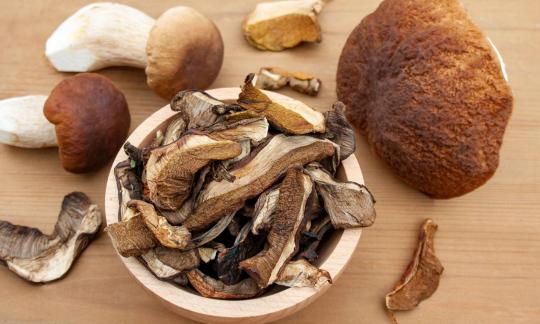

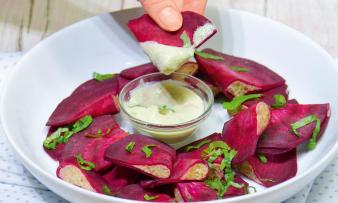
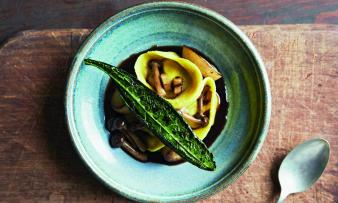
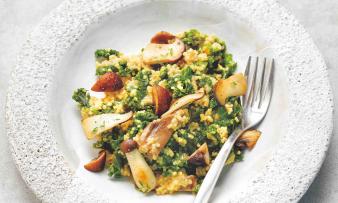

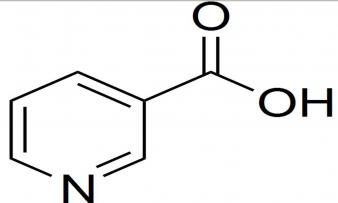
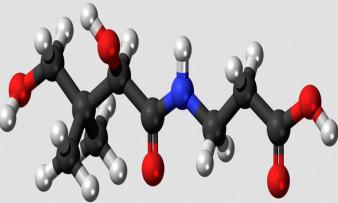


Comments